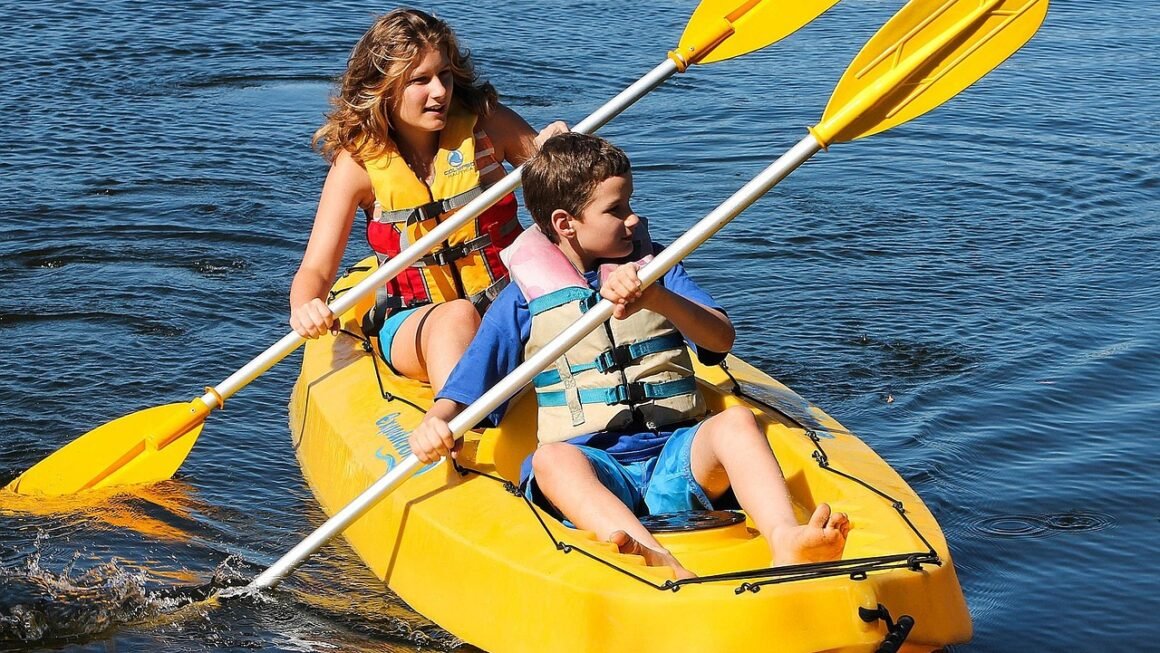Riding down a snow-covered mountain with the wind in your face is an experience unlike any other. Snowboarding offers a unique blend of adrenaline, freedom, and connection with nature, making it a popular winter sport for people of all ages and skill levels. Whether you’re a seasoned pro carving down black diamond runs or a beginner taking your first tentative steps, the joy of snowboarding is undeniable. This guide will provide you with everything you need to know to get started or improve your skills on the slopes.
Getting Started with Snowboarding: Your First Steps
Choosing the Right Gear
The right equipment can make or break your snowboarding experience. Here’s a breakdown of essential gear:
- Snowboard: Snowboards come in various shapes and sizes, each designed for different riding styles.
All-Mountain Boards: Versatile and suitable for beginners.
Freestyle Boards: Shorter and more flexible, ideal for park riding and tricks.
Freeride Boards: Longer and stiffer, designed for powder and aggressive riding.
Sizing: Generally, a board should reach somewhere between your chin and nose when stood upright.
- Boots: Comfortable and well-fitting boots are crucial.
Ensure your toes touch the end of the boot lightly when standing straight, and pull back slightly when bending your knees.
Consider flex – softer boots are more forgiving for beginners.
- Bindings: Bindings attach your boots to the board.
Ensure they are compatible with your board and boot size.
Experiment with different binding angles to find what’s comfortable for you. Most beginners start with a slightly positive angle on both feet.
- Helmet: Safety first! A well-fitting helmet is non-negotiable. Look for helmets that meet safety standards like ASTM F2040 or CE EN 1077.
- Goggles: Protect your eyes from the sun, wind, and snow.
Choose lenses appropriate for the weather conditions (e.g., low light lenses for cloudy days).
- Gloves or Mittens: Keep your hands warm and dry. Mittens are generally warmer than gloves.
- Appropriate Clothing: Layering is key!
Base Layer: Moisture-wicking fabric (e.g., merino wool or synthetic).
Mid Layer: Fleece or insulated jacket for warmth.
Outer Layer: Waterproof and windproof jacket and pants.
Finding a Good Instructor and Resort
Taking lessons from a certified instructor can accelerate your learning curve and prevent bad habits.
- Resort Selection: Choose a resort with beginner-friendly slopes and good snow conditions.
- Group vs. Private Lessons: Group lessons are more affordable, while private lessons offer personalized attention.
- Instructor Credentials: Look for instructors certified by professional organizations such as PSIA-AASI (Professional Ski Instructors of America – American Association of Snowboard Instructors).
Basic Snowboarding Techniques
Getting Comfortable with Your Board
Before hitting the slopes, familiarize yourself with your board on flat ground.
- Strapping In: Practice strapping your boots into the bindings.
- One-Footed Skating: Use one foot to push yourself around and get a feel for balancing on the board.
- Walking Uphill: Learn how to traverse short uphill sections using the toe edge.
Falling Leaf and Heel Edge Control
These are fundamental skills for controlling your speed and direction.
- Falling Leaf: A technique where you move back and forth across the slope using either your toe or heel edge, resembling a falling leaf.
- Heel Edge Control: Practice stopping and controlling your speed using your heel edge. This is the edge on the back of your snowboard. Lean back slightly and engage the edge to slow down or stop.
- Toe Edge Control: Practice stopping and controlling your speed using your toe edge. This is the edge on the front of your snowboard. Lean forward slightly and engage the edge to slow down or stop.
- Body Positioning: Keep your knees bent, your back straight, and your eyes looking in the direction you want to go.
Linking Turns
Once you’re comfortable with edge control, you can start linking turns.
- Transitioning Between Edges: Shift your weight from one edge to the other to initiate a turn.
- Looking Ahead: Focus your gaze on the direction you want to turn.
- Practice Makes Perfect: Don’t be discouraged if you fall – it’s part of the learning process.
Advancing Your Snowboarding Skills
Intermediate Techniques
- Carving: Carving involves making clean, smooth turns without skidding. It requires precise edge control and weight distribution.
Engage your edges aggressively to create a clean carve.
Maintain a low center of gravity for stability.
- Riding Switch: Riding switch means riding with your non-dominant foot forward. It’s essential for versatility and performing tricks.
Practice riding switch on gentle slopes.
Start with small, controlled turns.
- Jumps and Tricks (Beginner Level):
Start with small rollers and gradually progress to larger jumps.
Learn the basics of ollies to get your board off the ground.
* Wear appropriate safety gear and consider taking a park safety course.
Advanced Snowboarding
- Freestyle Riding: Freestyle involves performing tricks in terrain parks, including jumps, rails, and boxes. This requires a high level of skill and control.
- Freeride Snowboarding: Freeride is about exploring off-piste terrain and riding in powder. This demands excellent board control and knowledge of avalanche safety.
- Backcountry Snowboarding: Backcountry snowboarding involves riding in remote, ungroomed areas. This requires specialized equipment (e.g., avalanche gear) and advanced skills.
Staying Safe on the Slopes
Avalanche Awareness
If you plan to ride in the backcountry, avalanche awareness is crucial.
- Take an Avalanche Safety Course: Learn about avalanche formation, terrain assessment, and rescue techniques.
- Carry Essential Equipment: Avalanche transceiver, shovel, and probe.
- Check the Avalanche Forecast: Before heading out, check the local avalanche forecast and be aware of current conditions.
- Ride with a Partner: Never ride alone in the backcountry.
General Safety Tips
- Warm-Up: Warm up your muscles before riding to prevent injuries.
- Stay Hydrated: Drink plenty of water throughout the day.
- Know Your Limits: Don’t attempt runs or tricks beyond your skill level.
- Be Aware of Your Surroundings: Pay attention to other riders and obstacles on the slopes.
- Obey the Skier’s Responsibility Code: A set of guidelines promoting safe and responsible behavior on the slopes.
Conclusion
Snowboarding is a rewarding and exhilarating sport that offers something for everyone. By starting with the basics, practicing regularly, and prioritizing safety, you can progress your skills and enjoy the thrill of riding down the mountain. Whether you’re carving groomers, hitting jumps in the terrain park, or exploring the backcountry, the possibilities are endless. So, gear up, get out there, and experience the joy of snowboarding!



